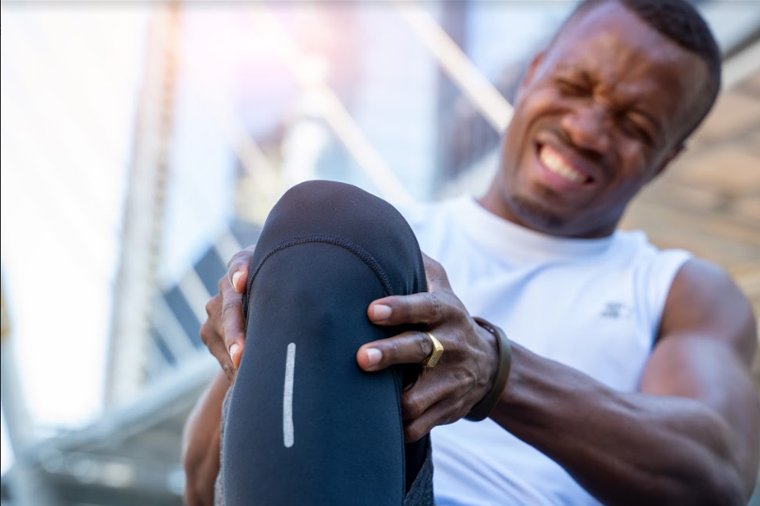There’s always a chance you can gain injuries regardless of whether you’re a highly trained athlete or a weekend warrior. Some injuries may not need medical attention, as your body has functions to heal certain discomforts. But some incidents may need more than simple rest for them to heal.
Knowing about these injuries is going to be your first lesson for incident prevention and treatment. So here are five common sports injuries and the methods to treat them:
Hip Flexor Strain
Your hip flexors are the muscles located on the upper front side of the thighs. Their function is to help lift the knee to the trunk. Hip flexors are used daily, as these muscles help move one leg to and away from the other.
The repetitive movement of sports training can cause hip flexors to strain. Some of the signs that you already have this injury (or are already developing it) include:
- Muscle spasms
- Bruising
- Visible muscle deformity
- Visible limp while walking
- Pain during various movements (e.g., climbing stairs or lifting the knee)
Hip flexor strain can have different causes, including osteoarthritis, hip flexor overuse, and direct trauma to the hip. Also, doing specific sports activities like dance, soccer, and martial arts can contribute to the development of this injury.
Although it sounds counterintuitive, specific exercises can help reduce hip flexor strain and its associated pain. Focus on doing low-impact hip exercises and stretches to help strengthen the hip flexor muscles, allowing the area to reduce tension and prevent future injury.
Other treatments you can use to treat hip flexor strain are:
- Rest and avoidance of extreme physical activities
- Wearing compression clothing around the affected area
- Applying a hot or ice pack to the affected area
- Taking a hot shower or bath
- Consuming over-the-counter pain relievers
Proper warm-up and cool down before and after training sessions can also help prevent many sports-related injuries, including hip flexor strain. You can find more information about these movements by visiting the following link: https://www.bhdorthopedics.com/sports-medicine-idaho-falls.
Shin Splints
Are you fond of jogging or running? Are you doing sports that require repetitive shin movements? If so, then you might be at risk of developing shin splints.
Shin splints are the discomfort or pain felt along the tibia or shin bone, which is the large bone in the front of the lower leg. This sports injury tends to be relatively common for dancers, runners, martial artists, and military recruits.
One of the common causes of shin splints is a quick intensification of training routines when the shins are still incapable of adjusting to the new regimens. The increase in activity will overwork the muscles, tendons, and bone tissue, causing the development of pain in the lower leg.
You’ll know if you’re starting to develop or already have shin splints if you feel soreness, tenderness, or pain near the shinbone. Also, you might see mild swelling in the lower leg.
The onset of shin splints might make you experience pain in the lower leg. But this discomfort can dissipate after you finish training. However, this pain will return once you continue training, and the intensity will increase over time.
Failure to treat shin splints might progress to stress fracture or reaction. You should consider the following treatment methods if you’re starting to develop this injury:
- Avoidance of high-impact exercises
- Put ice on your shin to ease the pain and swelling
- Purchase and use shoe inserts (insoles)
- Take anti-inflammatory painkillers
Shin splints are treatable, but it may require time before the affected area is devoid of pain and swelling. Some cases may only require a few days of rest and medication for the injury to dissipate. But some severe cases might need a few weeks to a few months for the injury to disperse completely.
You’ll know if you no longer have shin splints if:
- You don’t feel pain in the lower leg when walking, running, or jumping.
- You can push with your legs without discomfort.
- Your injured legs feel as strong as your healthy leg.
Make sure to consult a physician before returning to your training regimen. The last thing you’d want is for the shin splints to return.
Knee Sprain
Runners, cyclists, and various ball sports players are susceptible to knee sprains. This injury occurs when the knee ligaments connecting the leg bones overstretches or tears.
Think of ligaments as the body’s elastic bands. These bands can only handle a specific amount of tension before they tear or break. If you have torn ligaments, particularly on your knee, your lower body will experience limited movement and support.
Furthermore, the type of knee sprain you experience will depend on the injured ligament:
- ACL or Anterior Cruciate Ligament controls the knee’s back-and-forth motion.
- PCL or Posterior Cruciate Ligament controls the shin bone’s backward movement.
- MCL or Medial Collateral Ligament provides the inner knee with stability.
- LCL or Lateral Collateral Ligament provides the outer knee with stability.
Doctors may classify knee sprain between three different categories ranging from Grade I to III, wherein Grade I has the lowest intensity while Grade III has the highest.
Also, note that knee sprain symptoms depend on the injured ligament. Doctors may require patients to undergo an X-ray examination to determine the exact location of the damaged or torn band. For example, if you declare that the pain is near the outer knee, the medical expert may say that you have a damaged LCL.
Treatment options also vary depending on the location and severity of the knee sprain. But some treatments are usable for all types of knee sprain. These remedies include:
- Ample rest
- Applying ice packs to the affected area
- Wearing knee compression gear
- Elevating the knee regularly
But some severe cases may require surgery to treat knee sprain correctly. Knee sprain surgery tends to involve reattaching the torn ligament to the correct position. Conversely, the doctor may replace the torn band with a healthy tendon from another body part.
Achilles Tendonitis
The Achilles tendon is the largest tendon in the body, which means it has more flexibility and strength than other tendons. But like other tendons, the Achilles tendon is also susceptible to damage. This part still has a maximum elasticity level before it becomes damaged or tears.
If you feel pain in the Achilles tendon, you might have Achilles tendonitis. This injury can occur to players of specific sports activities, including but not limited to:
- Basketball
- Tennis
- Soccer
- Running
- Long jumping
Achilles tendonitis are often more common in athletes. But that doesn’t mean that the average person can’t acquire this specific injury. Age, weak calf muscles, and incorrect walking or standing forms can cause this particular injury.
Doing activities with worn-out sneakers can also be a primary reason for Achilles tendonitis. Other causes of this injury include:
- Flat feet
- Poor running form
- Cold weather training
Moreover, leg length discrepancy can also increase the risk of the development of Achilles tendonitis. Consider having your leg length realigned before doing strenuous physical activities to reduce the risk of this injury.
The good news is that most cases of Achilles tendonitis are treatable. But there might be some rare cases wherein the Achilles tendon fibers separate and tear entirely.
See a doctor immediately if you’re experiencing the following symptoms:
- Ankle or leg soreness or stiffness
- Swelling in the Achilles tendon area
- Redness or warmth around the ankle
You can start the treatment process at home if you think you’re developing Achilles tendonitis.Some self-care solutions for this particular sports injury include the following:
- Reduce strenuous physical activities
- Apply an ice pack to the affected area regularly
- Use kinesiology tape on the affected area
- Use shoe orthotics or insoles
Other treatment options include physical therapy and surgery. Make to consult the professional medical advice of a doctor before using these remedies to avoid adverse effects.
Tennis Elbow
You can get tennis elbow apart from doing the sporting activity of the same name. It’s possible to acquire this injury from other activities like racquetball, fencing, and weight lifting. Other hobbies that need repetitive arm movements, such as carpentry, typing, and knitting, can also increase the risk of tennis elbow development.
The onset of tennis elbow includes symptoms like pain and tenderness on the outside of the elbow. Also, you might notice this discomfort when you:
- Lift an object
- Make a fist
- Grip an item
- Raise your hand
- Open a door
Doctors will tell you to flex your arm, elbow, and wrist to diagnose this particular injury. Medical professionals may also require you to undergo imaging tests, like an X-ray or magnetic resonance imaging (MRI). You can book a private MRI scan without a doctor’s referral.
Like other sports injuries, tennis elbow is curable, although you might need to take a break from doing sports.
Some of the treatment options for tennis elbow include:
- Applying ice packs to the elbow frequently
- Using elbow compression clothing
- Taking non-steroidal anti-inflammatory (NSAID) medicines
- Getting physical therapy
- Performing exercises focusing on range of motion
Final Word
The key to preventing sports injuries is to learn about these possible events. Exercising proper form and avoiding excessive movements can help reduce the risks of harming yourself during training sessions and official matches. Remember, consult your doctor if you think you’re developing a sports injury. Also, stop doing activities that may aggravate the problem.


